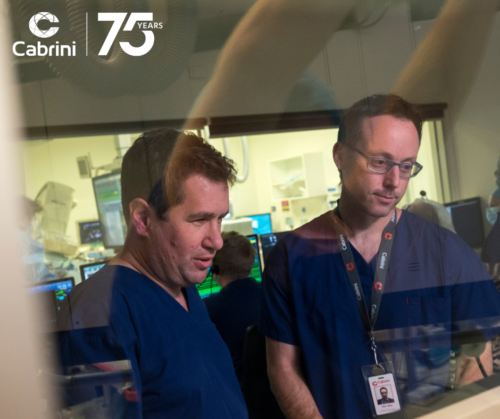Optimising TAVI procedures: Heart Research Month
31/01/2023

In Heart Research Month (February) we meet Associate Professor Dion Stub, an interventional cardiologist and clinician scientist specialising in coronary and structural heart procedures.
Internationally recognised for his research, having published more than 200 papers, A/Prof Stub helped develop Australia’s first treatment pathway for patients with refractory cardiac arrest.
As part of his international postdoctoral fellowship, he spent 12 months at St Paul’s Hospital, Vancouver, as an interventional fellow, working with Professor John Webb, an international expert in transcatheter aortic valve replacement (TAVI) for aortic valve disease.
Since then, A/Prof Stub has become one of the leading interventional cardiologists performing TAVIs in Australia.
Degenerative aortic valve disease is the most prevalent valvular heart disease in the elderly. If severe and left untreated after the appearance of symptoms, there is a 50% chance a patient will die after two years. In patients with diseased aortic valves, catheter-based replacement of the sick valve by TAVI is a less invasive alternative for surgical valve replacement.
TAVI was first performed in Australia in 2008 and continues to grow by 30-40% in procedure numbers every year. Between April 2018 and May 2020, 4098 TAVI procedures were performed in Australia. It has become the procedure of first choice in patients with increased operative risk worldwide and now is becoming increasingly available to lower risk patients.
During a TAVI procedure, the valve is implanted through a catheter from the groin, removing the need for open heart surgery and enabling a quicker recovery. Despite its usual success and performance with local anaesthetic whilst the patient is awake, TAVI is heart surgery with small but real risks of complications. There remains a risk of major or life-threatening bleeding from the access site, especially because patients require blood-thinners (heparin) during the implantation.
At the end of the procedure, when blood-thinners are no longer required, the effect of heparin can be reversed by protamine injection; however, routine use of protamine (at the end of every procedure in eligible patients) has not been tested in TAVI patients in a randomised trial. The decision to use protamine or not is made by the cardiologist performing the TAVI. This is the current standard of practice and formal treatment guidelines are needed.
A new multisite study being led at Cabrini by A/Prof Stub is testing a new approach to optimise the TAVI procedure. The ACE-PROTAVI study is examining if routine use of protamine is safer and has better patient outcomes than current standard practice, in which it is entirely up to the TAVI operator, and often not used. The results of this study will help to improve the safety of the TAVI procedure and its outcomes for patients (reduced morbidity and mortality) and society (reduced demand on constrained economic resources). It is hoped that these findings will help us develop an improved care pathway for patients that undergo TAVI.
This research is being supported by a Cabrini Foundation grant.
To learn more about Cabrini Research visit www.cabrini.com.au/research